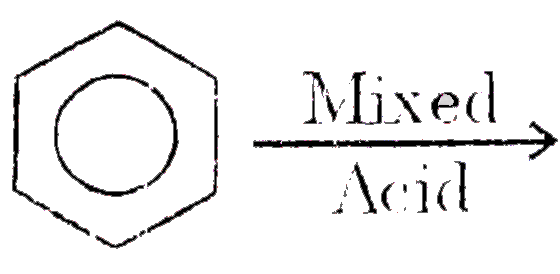C2H5BrAgCN−−−→XReduction−−−−−−−−→Zn−Hg/HCIY, Here, Y is:-
n-propylamine
Isopropylamine
Ethyl methyl amine
Ethylamine
The correct Answer is:C
To solve the question, we need to analyze the given reactions step by step.
Step 1: Identify the starting compound
The starting compound is ethyl bromide, which is represented as C2H5Br or CH3CH2Br.
Step 2: Reaction with AgCN
When ethyl bromide reacts with silver cyanide (AgCN), the bromine atom acts as a leaving group. The nitrogen atom from the cyanide ion attacks the carbon atom, leading to the formation of isocyanide. The reaction can be represented as follows:
C2H5Br+AgCN→C2H5NC+AgBr
Here, C2H5NC is the product formed, which is isocyanide (or ethyl isocyanide). We will denote this product as X.
Step 3: Reduction of Isocyanide
The next step involves the reduction of isocyanide X using zinc amalgam (Zn-Hg) in the presence of hydrochloric acid (HCl). The reduction of isocyanides typically leads to the formation of primary amines. The reaction can be represented as:
C2H5NC+Zn−Hg/HCl→C2H5NH2
Here, C2H5NH2 is ethylamine, which is the product Y.
Step 4: Naming the Product
The product Y is ethylamine, which is a primary amine.
Final Answer
Thus, the final product Y is ethylamine.
---
The starting compound is ethyl bromide, which is represented as C2H5Br or CH3CH2Br.
When ethyl bromide reacts with silver cyanide (AgCN), the bromine atom acts as a leaving group. The nitrogen atom from the cyanide ion attacks the carbon atom, leading to the formation of isocyanide. The reaction can be represented as follows:
The next step involves the reduction of isocyanide X using zinc amalgam (Zn-Hg) in the presence of hydrochloric acid (HCl). The reduction of isocyanides typically leads to the formation of primary amines. The reaction can be represented as:
The product Y is ethylamine, which is a primary amine.
Thus, the final product Y is ethylamine.
Topper's Solved these Questions
- ALKYL AND ARYL HALIDEBOOK - ALLENCHAPTER - ALKYL AND ARYL HALIDEEXERCISE - EXERCISE-02
1 Videos
- ALKYL AND ARYL HALIDEBOOK - ALLENCHAPTER - ALKYL AND ARYL HALIDEEXERCISE - EXERCISE-04 [A]
1 Videos
- ALKYL AND ARYL HALIDEBOOK - ALLENCHAPTER - ALKYL AND ARYL HALIDEEXERCISE - EXERCISE-01
1 Videos
- ALKENE, ALKANE & ALKYNE BOOK - ALLENCHAPTER - ALKENE, ALKANE & ALKYNE EXERCISE - EXCERSISE-3
28 Videos
- Atomic StructureBOOK - ALLENCHAPTER - Atomic StructureEXERCISE - All Questions
62 Videos
Similar Questions
Knowledge Check
 Hbr−−→(X)Nal−−−→acetone(Y)(Major), Product (Y) is :Acis-2-buteneBtrans - 2- buteneC1-buteneDIso-butene
Hbr−−→(X)Nal−−−→acetone(Y)(Major), Product (Y) is :Acis-2-buteneBtrans - 2- buteneC1-buteneDIso-butene
CH3COOHBr2/P−−−→(Y)(i)KCN−−−−−−→(ii)H3O+(X)
Here, (X) is :
View SolutionC2H5IAgNO2−−−→X. Here X(major product) is :
View Solutioncomplete the missing links in the folloiwng :
C2H5OHNa−−→[X]C2H5I−−−→Heat[Y]
View Solution
P(Monosubsitituted benzene)Na(Hg)−−−−−−−−→+conc.H2SO4QNaNO2−−−−−−−−→+HCl.0∘.5∘CRKCN−−−→CuCNSSnCl2−−−→HClT
Correct statement are :
View SolutionGive the strutures of (A), (B) and (C ) in the following reactions :
C6H5NO2Fe/HCI−−−−−→(A)HNO2−−−→273K(B)C6H5OH−−−−→(C)
View SolutionCH3−CH2−O∣∣C−OAgBr2−−→CCl4X(1) Li−−−→(2) CuIYCH3−CH2−Br−−−−−−−−−→dry etherZ
View SolutionIn the sequence of reactions
C6H5BrMg−−→ether(X)(i)CO2−−−−−−→(iii)H3O+(Y) the product (Y) is
View Solution
